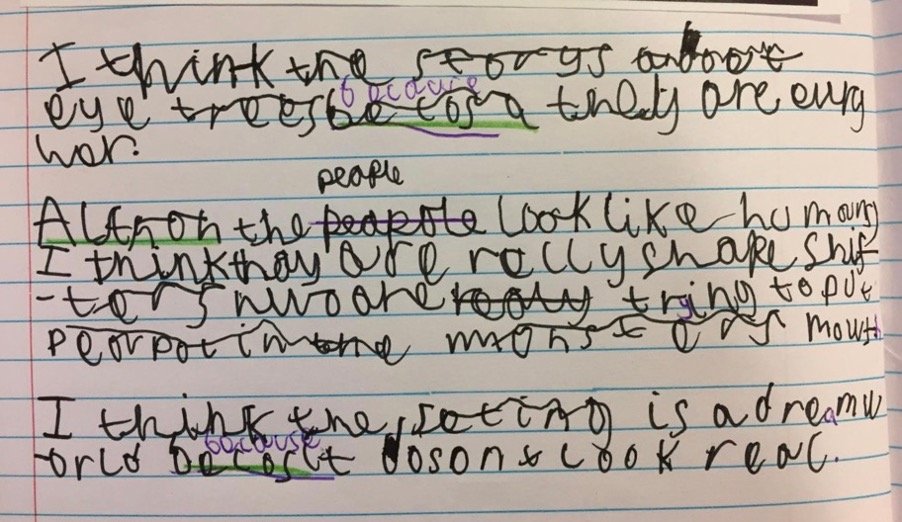High Expectations
Ofsted inspectors love high expectations.
I’ve noticed this. I’ve read through enough reports to get a sense of how they feel about handwriting and presentation.
There are way too many to share of course but I’ve picked a few comments out of the hat:
‘Teachers do not have consistently high expectations of pupils’ writing. As a result, pupils’ spelling and handwriting often are not good enough.’
‘Expectations of what pupils can achieve have been too low, particularly in handwriting and presentation.’
‘Teachers must challenge pupils to improve their presentation when it falls below expectations.’
(from 2019 Reports)
I’ve got to be honest, I have mixed feelings about the phrase ‘high expectations’ because too often it’s not clear what that means. I understand why it’s used (and I believe I have them) but it’s a term that’s so open to interpretation. I think we need to give it some thought and have more conversations about it because in reality, some interpretations do more damage than good. In this Ofsted context, for me there’s a sharpness about it, an intensity… a judgement and criticism of teachers, which feels like pressure to put pupils under pressure…
“Max had always thoroughly enjoyed school until he hit the second part of Year 3,” Kate told me, “when the only thing his teacher ever commented on was how he had to improve his handwriting. He stopped wanting to go to school even though he loved learning and loved his friends. Feedback to us as parents was simply 'it will come if he practises'… but it didn't. Handwriting became a four-letter word in our house.”

You may not be surprised to hear that Max was the last to get his ‘pen-licence’ at the end of Year 5 and (now in Year 6) handwriting “is still a source of struggle.”
I hear so many stories like this. Aside from the child and their handwriting, the relationship between teacher and parent becomes fragile. That’s not good for anyone.
But wasn’t Max’s teacher simply ‘challenging’ him to improve his presentation and ‘having consistently high expectations’?
When it comes to handwriting, I don’t believe effective high expectations are about:
being ‘strict’
‘telling’ children to improve
constantly reminding them of what’s wrong and then getting frustrated when they keep making the same mistakes
making them miss playtimes to rewrite things or writing something out in ‘best’ when they’ve just finished a lengthy draft.
Of course, when there’s a degree of threat involved (having to re-write or miss break) fear levels can make children more alert, and this can sharpen their short term focus, but it doesn’t make for a good relationship with writing. In fact it damages it. It’s not rocket science.

In this example can you see where the pupil attempted to go back and ‘join’ some words in his writing after finishing, to try and avoid having to write it out again. He was aware of the expectation to join but was unable to sustain joining up at the same time as formulating sentences from his thoughts.
An approach as described above tells me a teacher (or parent) doesn’t really understand (or have time to understand) what’s involved in producing the ‘expected high standard’ of handwriting:
the small step development of fine motor skills
the need to practise until writing becomes automated
the load on working memory when writing
the impact of anxiety on working memory
the impact of distraction in the environment
and the emotional context for an individual
I could write a book on this but instead, just to get you thinking, I’ll share 3 suggestions for developing high expectations regarding handwriting:
Have them for yourself. Develop your subject knowledge around handwriting
How can you expect something of a child when you don’t really understand the issues they’re facing - the developmental, neurological and emotional factors involved?
What are you modelling and communicating in terms of your own writing, beliefs, interest and the language you use?
Confidence in your own ability transmits. It can transform you from sharing an air of frustration, disappointment, negative judgement or disinterest to one of calm reassurance, positive support and practical suggestions. You will come to embrace and trust the expression ‘Less is more’!
Prioritise consistent discrete handwriting practice
15 minutes a day:
5 minutes looking, discussing, thinking
5 minutes writing
5 minutes reflecting
If it’s important to you, important enough to allocate regular time and attention, it will become important to a child. Children crave adult attention and this investment of time and focused attention is a powerful catalyst.
Work to establish a consistent routine so there’s no decision necessary (for you or a child) about whether practice will happen today or not. It just does, like brushing our teeth. That makes it easier for you and the children.
Be interested and have conversations
Genuinely. About handwriting but also in individuals. Build in elements that let them know you know them.

In this practice for example, I’ve included the name of a video game (Fortnite) that I know the student likes. I’ve also included places that he’s connected to.
Be interested rather than judgemental.
Thinking back to the example of the posthumous joining:
“Ahh I can see what’s happened here. You had so much to think about – choosing words and making sentences that there wasn’t enough thinking space for remembering to join up all your handwriting. Isn’t it interesting to see?! Don’t worry for this piece. If we were going to put it on the wall we’d find time to copy it out but I was perfectly able to read it. You explained your thinking really well.”
Something along those lines. You get the idea.
As I said I could go on, but for now I hope you can find a little time to reflect on what high expectations in handwriting mean for you. Please go and enjoy having some conversations about it!
